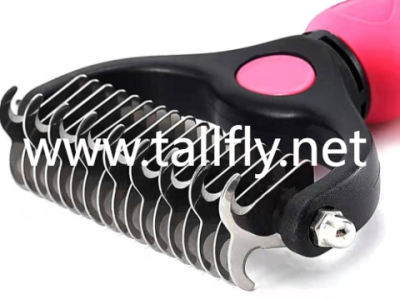Categories
Tags
-
#PetHairScraperManufacturer
#PetHairScraper
#TallflyPetHairScraper
#Pet Collar Factory
#Pet Collar
#Tallfly Pet Collar
#China Pet Leash
#Dog Leash Factory
#Tallfly Dog Leash
#Hair Remover Roller Supplier
#Hair Remover Roller
#Tallfly Hair Remover Roller
#Pet Grooming Comb
#Pet Grooming Comb Manufacturers
#Tallfly Pet Grooming Comb
#Aluminum Mig Wire Manufacturers
#Aluminum Mig Wire
#Kunliwelding Aluminum Mig Wire
Archives
Why Aluminum MIG Wire is reshaping automotive fabrication at sc
-
Posted by Chloe Vincy Filed in Technology #Aluminum Mig Wire Manufacturers #Aluminum Mig Wire #Kunliwelding Aluminum Mig Wire 595 views
In modern fabrication environments Aluminum Mig Wire Manufacturers are under fresh scrutiny as vehicle makers shift to lighter assemblies and revised joining strategies. That shift has put filler metal selection at the center of many conversations on assembly floors and in procurement meetings. As electrification and efficiency conversations shape supply chains weld teams and purchasing groups must work together to ensure that wire selection supports robust joining while allowing production rhythm to continue.
One clear industry theme is the move toward processes that favour higher deposition rates and repeatable travel speeds. MIG welding of aluminum gives fabricators throughput advantages in many joint types which helps when automotive programs require predictable cycle times. Shops converting panels and sub assemblies to aluminum often report that the continuous feed nature of the process reduces interruptions compared with some alternatives which helps maintain line efficiency.
Yet adopting aluminum MIG wire at scale is not only a matter of swapping spools. Incoming material control is critical. Buyers should require lot level documentation and practical coil inspection on receipt. Look for intact packaging correct spool handling and visible cleanliness. A short trial weld in the actual production setup catches problems that paperwork alone may hide. The product details and application notes that a manufacturer provides can be a useful starting point when designing that acceptance test.
Technical pitfalls are predictable and manageable when teams align on a few key points. Surface oxides are persistent on aluminum and will affect fusion unless removed with simple mechanical or chemical preparation. Gas shielding stability matters because inconsistent gas delivery increases the risk of pore formation in the weld bead. Choosing the appropriate inert gas and confirming delivery integrity at the torch are straightforward ways to improve transfer quality and reduce rework.
Wire feed reliability is another practical concern for high volume lines. Aluminum wire has different feeding characteristics from steel wire and can kink or bird nest if the feed system is not matched to the spool and drive setup. Checking wire straightness and matching the feeder specifications saves valuable setup time and avoids mid run stoppages that ripple across the assembly schedule. Many fabricators improve uptime by standardizing feed paths and validating pulsed or spray parameters during pilot runs.
Supplier collaboration is part technical and part logistical. With shifting market conditions teams that lock in clear acceptance rules and staged releases reduce the chance of supply related disruption. Practical contract language that ties acceptance to a small sample test or to a documented lot marker speeds resolution if a shipment does not meet expectations. When procurement and engineering use the supplier product documentation as a basis for those acceptance tests they can shorten qualification cycles.
Training and short audits are the human side of scaling aluminum MIG work. Even in automated cells operator technique influences outcomes. Routine refresh sessions on cleaning joint fit up gas checks and heat input control keep small deviations from growing into repeatable defects. Incorporating short process capability trials before long production runs helps validate settings under real conditions and avoid costly mid program corrections.
When choosing a filler consider the application environment and the intended service conditions of the assembly. Some wires are formulated to resist corrosive atmospheres while others are tuned to weld particular substrate groups with good ductility. Matching filler and parent materials plus validating through a quick pilot sample under production parameters reduces the chance that a weld will need rework later in the assembly line.
Putting these pieces together reduces operational friction. Start with supplier provided technical notes and then confirm in the shop with a trial weld. Use simple incoming checks to ensure coil condition. Match feeder setup to spool type and confirm stable shielding gas delivery. Train operators on joint cleaning and heat management and embed short audit checks into routine production. These practical steps help teams realize the process advantages that aluminum MIG welding can deliver while avoiding common pitfalls.
For teams seeking concrete product information and application guidance look at manufacturer product pages and then arrange a short pilot under your shop conditions. Reviewing supplier materials helps teams draft acceptance checklists and prepares them to run meaningful pilot samples. To review a specific aluminum MIG product and its application notes consider visiting the product information at https://www.kunliwelding.com/product/aluminum-alloy-wire/aluminum-alloy-welding-wire.html
This resource pairs product details and practical usage guidance that teams can use to build acceptance tests and supplier qualification steps. The combination of manufacturer documentation and a controlled shop trial supports steady integration of aluminum MIG wire into automotive welding operations.
